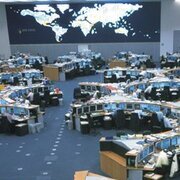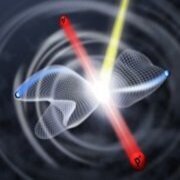Research Teams and Topics
Financial numerical mathematics

In the past decennia the international financial markets are witnessing a huge increase in the trading of evermore complex products, such as exotic options and interest rate products, and this growth is only amplifying. For the traders it is of crucial importance to be able to price these products accurately, robustly, and as fast as possible.
In contemporary models, the prices of options are described as solutions to multi-dimensional and time-dependent partial differential equations, constituting extensions to the celebrated one-dimensional Black-Scholes equation. In our research we design and analyze numerical techniques that can effectively solve these large-scale equations.
This research is led primarily by Prof. Dr. K. In't Hout.
For more information, visit K. In't Hout's university page or personal page.
Mathematical methods for physics, biology and chemistry

Modern experimental tools in physics and chemistry are able to probe the dynamics inside molecules, solids and fluids. To accurately predict the outcome of these experiments, mathematical tools are needed that solve the multi-dimensional and time-dependent linear and non-linear Schrödinger, Helmholtz and Bolzmann equations.
We develop and analyze the mathematical tools required for simulation and solution of these complex systems starting from first principles and realistic microscopic interactions. The resulting methods often give rise to large-scale calculations on state-of-the-art supercomputing infrastructure.
This research is led primarily by Prof. Dr. W. Vanroose.
For more information, visit W. Vanroose's university page.
Numerical methods for astrophysics

Star forming regions constitute gigantic laboratories in which diverse physical and chemical phenomena can be studied under circumstances that cannot be realized on earth. Their evolution is governed by the several interactions between its components (stars, gas and dust) such as gravitation, ionization, radiation pressure, electro-magnetism etc.
We focus on the dynamical state of such systems during the last phase of their evolution. This requires in particular the knowledge of stellar radial velocities; a major part of our research effort is aimed at improving the accuracy of numerical methods for deriving these velocities from observed spectra.
This research is led primarily by Em. Prof. Dr. M. David.
For more information, visit the A.R.G. webpage (http://astro.ua.ac.be)